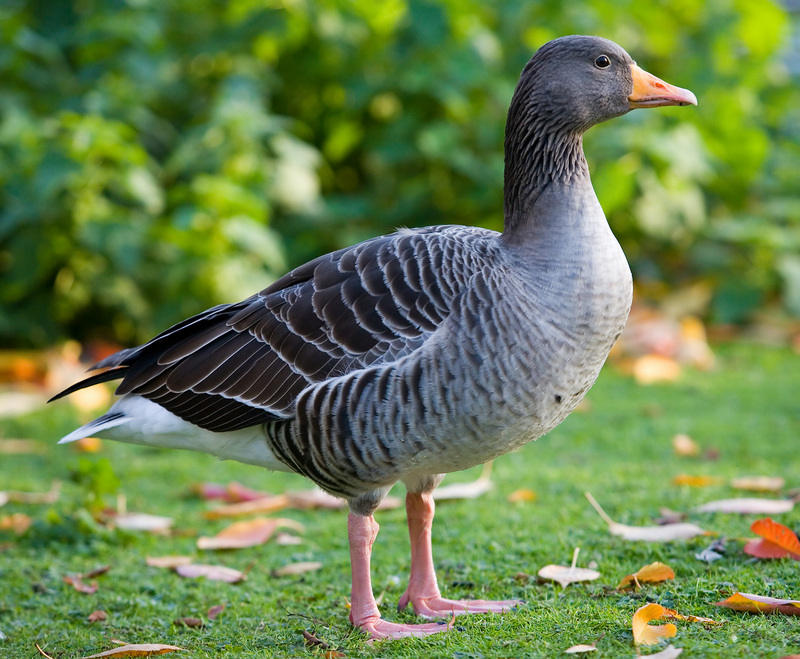| 새로운 사진 | 신문속의 동물소식 | 신기한 동물이야기 | 동물의 소리 | 동물동화상 | 사진 올리기 | 사진 저작권 | English |
|---|
| 재미있는 동물사진 | 괴수/괴어/엽기 동물사진 | 동물이름사전 | 동물목록 | 바깥고리 | 창고입구 | 똑똑누리집 |
|---|
| 이미지 정보 | Original File Name: Western Greylag Goose (Anser anser anser)_-_St_James\'s_Park,_London_-_Nov_2006.jpg Resolution: 1715x1413 File Size: 779246 Bytes Date: 2006:11:19 15:07:12 Camera: Canon EOS 5D (Canon) F number: f/4.0 Exposure: 1/500 sec Focal Length: 185/1 Upload Time: 2008:01:06 23:09:56 | |
| 올린이 | 이름 (메일주소): Unknown | |
| 사진 제목 | Greylag Goose (Anser anser) - Wiki | |
 |
| Email : 카드 | 올린이 | 운영자 사진삭제 정보수정 Admin |
| 설명 | Greylag Goose (Anser anser) - Wiki
Greylag Goose
The Greylag Goose, Anser anser, is a bird with a wide range in the Old World. It is the type species of the genus Anser. It was in pre-Linnean times known as the Wild Goose ("Anser ferus"). This species is the ancestor of domesticated geese in Europe and North America. Flocks of feral birds derived from domesticated birds are widespread. The Greylag Goose is one of the species to which the Agreement on the Conservation of African-Eurasian Migratory Waterbirds (AEWA) applies. Physical appearance The Greylag is a large goose, 74???84 cm (29???33 in) long with a 149???168 cm (59???66 in) wingspan and a body weight of 2.3???5.5 kg (5???12 lbs). It has a large head and almost triangular bill. The legs are pink, and the bird is easily identified in flight by the pale leading edge to the wing. It has a loud cackling call, kiYAAA-ga-ga, like the domestic goose. The western European nominate subspecies, A. a. anser, has an orange-pink bill and is slightly smaller and darker than the pink-billed Asian race, A. a. rubrirostris. Eastern European birds are often intermediate in appearance. Interesting Behavior These birds are famous for their extremely strong Fixed Action Patterns behavior. FAP's are highly specific, neurologically hardwired behaviors that are exhibited virtually identically everytime a stimulus is presented. These use it to push eggs back into the nest when they have fallen out. In fact, to demonstrate how ritualized these FAPs are, if the egg is removed as the graylag goose pulls it back toward the nest with its beak, the goose will continue the movement for a certain length of time and then restart the movement after it sits down on the nest and realizes an egg is still missing. You can confront it with a novel situation, such as a doorknob next to the nest. The FAP causes it to retrieve the doorknob as if it were an egg. The exaggeration of the sign stimulus, such as replacing a goose egg with a volleyball, causes an exaggerration of the FAP. Source: Most college level Evolution and Ecology text books. Specific source at hand (I dont want to go find my Evo/Eco books from my shelf) the Kaplan published book, "GRE EXAM Subject Test: Biology. 2007-2008 edition" on pages 214-215 in the section on "Animal Behavior and Learning", under subsection FAP. Range and habitat This species is found throughout the Old World, apparently breeding where suitable localities are to be found in many European countries, although it no longer breeds in southwestern Europe. Eastwards it extends across Asia to China. The geese are migratory, moving south or west in winter, but Scottish breeders, some other populations in northwestern Europe, and feral flocks are largely resident. This species is one of the last to migrate, and it is thought that "greaylag" signifies in English "late", "last", or "slow", as in laggard, a loiterer, or old terms such as lagman, the last man, lagteeth, the posterior molar or "wisdom" teeth (as the last to appear), and lagclock, a clock that is behind time. Thus the Greylag Goose is the grey goose, which in England when the name was given, was not strongly migratory but lagged behind the other wild goose species when they left for their northern breeding quarters. In Great Britain they much declined as a breeding bird, retreating north to breed wild only in the Outer Hebrides and the northern mainland of Scotland. However, since the 1930s and 1960s feral populations have been established elsewhere, and they have now re-colonised much of England. The breeding habitat is a variety of wetlands including marshes, lakes, and damp heather moors. Within science, the greylag goose is most notable as being the bird with which the ethologist Konrad Lorenz first did his major studying into the behavioural phenomenon of imprinting. North America In North America, small populations of Greylag Geese descended from domesticated geese have become established, mostly in city parks and near humans. These geese usually exist as part of larger flocks of Canada Geese. The Greylag Goose can hybridize with the native Canada Goose, producing birds which, to say the least, can be puzzling to birders attempting to identify them. http://en.wikipedia.org/wiki/Greylag_Goose
| |||
| 저작권 정보 | 사진의 저작권은 원저작자에게 있습니다. 동물그림창고는 동물관련 사진을 전시할 수 있는 공간만을 제공합니다.사진을 사용하고자 할 경우에는 저작권자와 협의하시기 바랍니다. |
|
|
|
| |||||||
| CopyLeft © since 1995, 동물그림창고. All rights may be reserved. | ||||||||
Stats